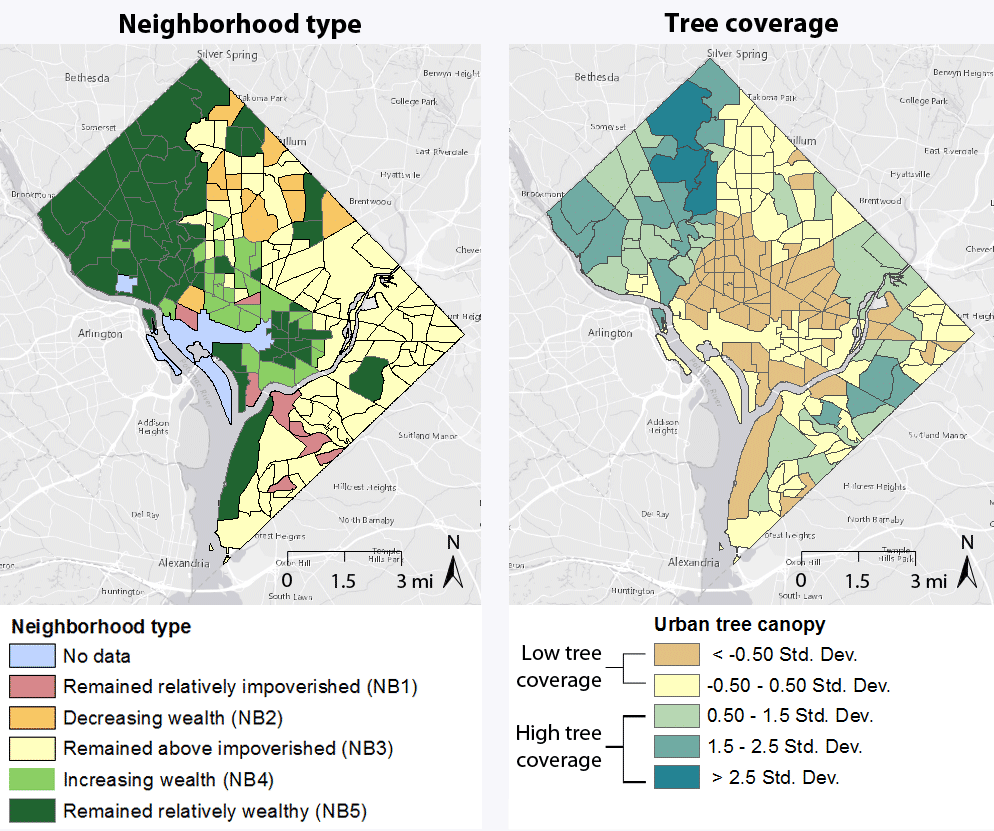Incorporating disaggregated socioeconomic information while planning, designing, analyzing, and budgeting forest-related programs can help ensure an understanding of differential social and economic impacts, costs, and benefits. Data may include demographic data, qualitative research, land ownership data, and crime and safety statistics, with due consideration of data privacy and anonymity. The Green Bond Report from San Francisco’s Public Utilities Commission (Water Enterprise, 2018-19) provides an example of how social impacts of projects can be monitored. The annual report focuses on the social impacts that their policies and programs achieved in the past year, including specific benefits to local communities.
Vibrant Cities Lab’s “Where to Plant and Why” provides more ideas on using social information for equitable planning, especially while mapping and siting. The government of King County, Washington (U.S.) systematically overlayed data sets like health and education metrics, disaggregated by race and region, and ethnic minorities’ proximity to parks to better understand the distributional and equity impacts of public investments in community amenities such as parks and trails. This helped the county identify the need to set aside funding to further develop the underserved South Country Trail System.
